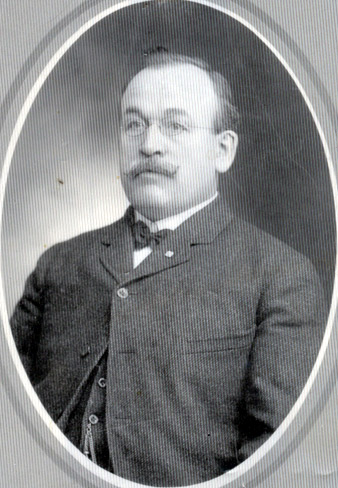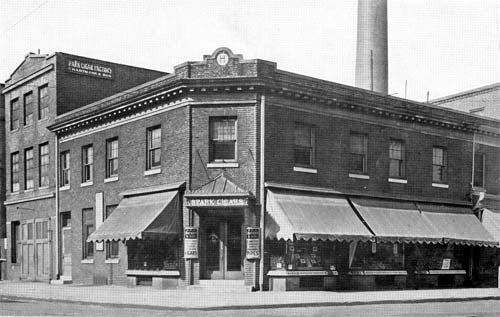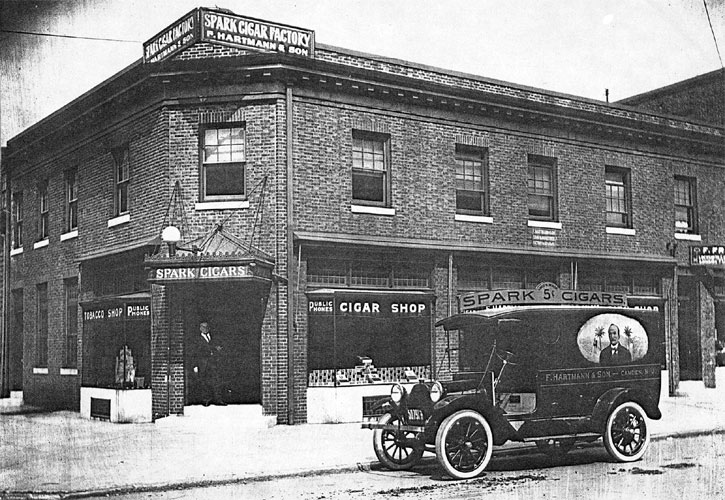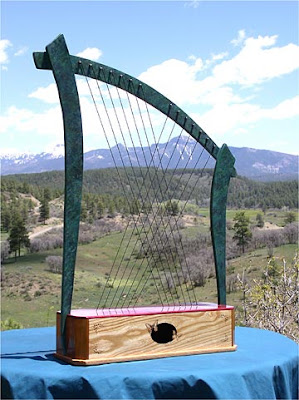| |
Nov 09
Today I visited Walt Whitman’s Tomb and house with my dad. We went to the tomb first and I was amazed how strudy the little mausoleum was! And because of the bricks in the ground and tree limbs (not very wheelchair friendly) I couldn’t get close to the tomb to peek in, but my dad told me that the names of Walt’s family members were still visible on their tombs after all these years, so I thought that was pretty cool! Unfortunately, I didn’t get a picture of the inside of the tomb because my dad couldn’t figure out how my cell phone camera worked. Even when I set it up and said press this button, he still press the wrong one haha. But I took pictures of what I could get to myself and will post them below. I also really liked the tree beside the tomb with all the cravings. I didn’t go with you guys on Saturday, so I missed the tour. Does anyone know if the cravings on the tree are oyher authors, or fans of Whitman or something?? I couldn’t find a plaque or anything about the tree at the site. The tree reminded me of a tree we saw when I went to Ireland with Rutgers. We visited Lady Gregory’s house, who was a patron of Irish poets and a friend of Yeats, Joyce and George Bernard Shaw (and other poets and writr/artists) and on her property she had what she called an autograph tree where all the authors who had come to visit her throughout her life craved their intials or whatever they wanted as their autograph. It was pretty cool to see, so I figured maybe the tree by Walt’s tomb was a similar thing. If anyone knows, let me know. I’m just curious. I felt very peaceful visiting Whitman’s tomb. It felt like something we should do since we have been studying him all semester. And it seemed fitting that his tomb across from a little pond that’s in the cemetary. Reminds us of Timber Creek. Also, I don’t know if some of you left them when you visited on Saturday, but there were flowers by his grave marker that seemed pretty fresh. Some were colored daisies. And I thought how nice they looked there and how Walt would have liked them. I was definitely glad that I went to see his tomb. Welearned that it cost 4,000 dollars then to build that would probably be 50k today, i don’t know. It’s just interresting to think about. I also felt a little proud to have visited Whitman’s grave. I guess it’s because we’ve been studying him, but he very easily could have returned home to New York to be buried and instead he chose Camden.
As for the house, I couldn’t get in because of their being steps and me haing my wheelchair of course (plus my chair wouldn’t have even fit through the door! it was so narrow!), so I basically just saw the outside of the house and couldn’t get a good picture of it from the car, but I did see it and get a feel for it. I kept thinking how narrow the staircase must have been inside. Enjoy the pictures and let me know if I missed anything interesting on the tour!
Okay apparently I cant post my pictures to the blog because I took them with my cell phone and emailed them to myself. But when I saved them to my desktop to upload them it says there is an error posting them. So, if you want to see my pics, I’ll have my cell with me on thursday in class. If anyone knows why I couldn’t upload them let me know.
Tags: walt whitman house, walt whitman tomb, ww20
Oct 18
Song of Myself in Prose
This week’s reading of the rest of Speciman Days was to me, Song of Myself in prose. This last portion of Walt’s journals take place after his return from the war when his is back in the South Jersey/ Camden area. Immediately from the start of his entry entitled “New Themes Entered Upon” we realize that we have left the darkness of war and the battlefield behind. Instead Whitman has returned to his lazy days in the grass where we first met him in Song of Myself with odes to nature with early entries like “Entering A Long Farm-Lane”, “To The Spring and Brook”, “An Early Summer Reveille”, “Birds Migrating at Midnight” and “Bumblebees” (p 803-810).
With the post “A Sun Bath-Nakedness” Whitman begins to further develop his major theme of love of nature and speaks of nature’s beauty and greatness as it applies to his own health. As we know from the note on page 713 Whitman wrote this portion of his journals in ill health, after a stroke and here with entries like the sun bath entry Whitman speaks of nature’s wonder as the thing that has healed his spirit and keeps his outlook bright. He writes, “…to what do I attribute my already much restored health? That I have been almost two years, off and on, without drugs and medicines, and daily in the open air” (830). He continues the entry, describing the sun bathing process and finally attributes his nakedness largely to his rehabilitation (832). Then, in “The Oaks and I” he writes of the strength he gains from the oak trees, just as the sun restored him during his subbath the oak trees renew his strength during a morning walk. On page 832 he writes:
“shelter’d under a dense oak by the bank, where I have taken refuge from a sudden rain. I came down here…for the before-mention’d exercise I am fond of— to pull on that young hickory sappling out there…haply to get into my old sinews some of its elastic fibre and clear sap…I can soon feel the sap and sinew rising through me, like mercury to heat. I hold on boughs or slender trees caressingly there in the sun and shade, wrestle with their innocent stalwartness—and I know the virtue thereof passes into me”.
He continues, giving gratitude to all of Nature for its healing properties: “Thanks, invisible physician, for thy silent delicious medicine, thy day and night, thy waters and thy airs, the banks, the grass, the trees and e’en the weeds”(833).
Next, in entries such as “February Days”, where he mentions the songs of the robins and blue birds (838), Whitman is praising the healing aspects of Nature’s animals while entries such as “Horse Mint”, “Clover and Hay Perfume and even “Happiness and Raspberries” praise the power of scent on the human spirit.
With, the end of Whitman’s Specimen Days, he has given us a visceral, almost palpable report of the world around us and the healing properties they possess if we just approach them in the right state of mind. A trip to the Jersey shore can do wonders for our outlook, just by being in the sun and breathing in the ocean salts. I know this from experience. There are times when I just need to be at the ocean, somehow it lets you escape something that is bothering you and revives you somehow. Besides the shore Whitman visits Manhattan and loves that just as much (and any trip he takes on the ferry for that matter). Finally, Whitman also noticed that colors of things have an affect on our mental state and well-being(Straw Color’d and Other Psyches p. 852).
Thanks to Whitman for the reminder to return to nature occassionally to glean whatever it has to give me. And to always do my best to remain an optimist. Maybe we should all slow down a bit, stop worrying or being too busy and take some time to sun bathe naked or gain strength from oaks; after all it’s the healthy thing to do, Whitman says!
Tags: ww20
Oct 17
 Frank Hartmann Sr. 1890 Walt Whitman cigars were the brainchild of cigarmaker and businessman Frank J. Hartmann, Sr. Mr. Hartmann learned the cigar maker trade in the 1880’s from Cuban cigar maker Raphael Perez, whom Hartmann and his family lived with at the time. In 1887, Frank moved his family from the Perez’s Philadelphia home to what is now the Cramer Hill area of Camden. Shortly after his arrival in Camden, Hartmann met Abner Benjamin Sparks, Sr., fellow cigar maker and then owner of Spark Cigars. Spark Cigars was a small cigar manufacturing plant on third and Arch Street in Camden. Eventually, Hartmann bought Spark’s business expanding it into a larger building encompassing the entire corner of 3rd and Arch Streets. Below are some photos of Frank Hartmann and the Spark Factory (images courtesy of dvrbs.com a full link to the site is below).
 Sparks Factory Full View
 Spark Factory Close Up F. Hartmann in Doorway In approximately the 1890’s, Frank Hartmann developed Walt Whitman Cigars and while I was unable to find Hartmann’s personal reason for choosing Whitman as the “face” of his cigars, it seems that many cigar brands were using literary figures (even davey crockett) in order to entice the public to buy cigars. (you can find more info on cigar advertisting at the link below entitled cigaraficinado.com). And today the cigar labels and boxes are coveted collector’s items. According to the Libary of Congress exihibit, Revising Himself: Walt Whitman and Leaves of Grass, although Walt never believed he had reached the public he definitely had. His name was used to sell everything from cigars and coffee to insurance. and his name and image have become an integeral part of popular culture. Under their heading “Popularizing Whitman” the LOC writes:
Whitman feared he had not reached the common people, but his name has been used to sell cigars, coffee, whiskey, and insurance. His poetry was distributed to workers during the Depression and to soldiers during World War II. In 1957 the Walt Whitman Bridge opened between Philadelphia and Gloucester City, New Jersey. His words are inscribed in such public places as Reagan National Airport in Washington, D.C. and Fulton Ferry Landing in lower Manhattan. His image has been in cartoons and on matchbooks, postcards, and stamps. His life has inspired televison episodes and motion pictures. Hotels, buildings, plazas, camps, parks, truck stops, corporate centers, schools, AIDS clinics, think tanks, and shopping malls now bear his name (http://www.loc.gov/exhibits/treasures/whitman-legend.html).
While Frank Hartmann was running Spark Cigars he was extremely active in worker’s unions. In fact, his shop was the first to use an all-union labor. Perhaps that’s one reason he chose Whitman to be his icon. Who better to represent unionized worker’s than a poet who is all about humanity and equality?
Hartmann’s use of Whitman as the face of cigars was not a one way deal. By using Whitman, Hartmann not only sold cigars, but helped to promote Leaves of Grass as well. In 1898 Hartmann created a label for his cigar box entitled “Walt Whitman Cigars: Blades O’ Grass”. This would entice the public to not only buy the cigars, but to read Leaves as well.
 Blades O Grass 1898 (image courtesy of LOC and Dr. Scanlon) full link to loc exhibit below.
Then in 19o1 lithographers Kaufmann and Strauss created a sign that also became a box label. And this time the ad contained a slogan “Whitman Cigars: A Poetic Comfort” The Kaufmann and Strauss label and lithograph sign mark the first official ad for Walt Whitman Cigars and the importance during the early 20th century of lithographers in advertising. According to the website Cigar Afficiando’s article “Sign of the Times”:
In a self-perpetuating and evolving cycle, these signs became effective in expanding the cigar industry and captured the work of respected artists. By spreading awareness and appeal, they sold more cigars, spurring the release of new brands, which resulted in the commissioning of more signs. This also led to greater competition among brands in the tobacconist’s displays and an even greater need for dynamic, eye-grabbing ads (Cigar Aficiando link provided below) The Whitman Ad is currently valued at $10,000 (Cigar Aficianado)
Below is a picture of a reproduction of a 1910 ad that was similar to the original 1901 image and also ran with the poetic comfort slogan.Whitman Cigars: A Poetic Comfort
 Whitman Cigars: A Poetic Comfort The previous label from 1898 contained the name of the product, “Blades O’ Grass”, but here we see an evolution in advertising, not only because the company used professional lithographers, but because they wrote a slogan that is not product centric, but taps into the personality of Whitman himself. Here Hartmann and Son is truly selling an image. They are tapping into the concept of Whitman as the lazy, comfortable poet. A man of men who might sit down and enjoy the occassional cigar. And therefore the public sees cigars as a way to relax, as a way to live the life of a poet for a couple of minutes.
Finally, in other news, the above image has become an emblem of popular culture. While Googling I discovered Whitman’s image emblazoned on t-shirts sold on a punk clothing website (they are actually sold on a few different sites). I have provided the link below for your viewing pleasure. The idea of Poetic Comfort has gone punk. Here’s a picture to entice your buying power.
 - Whitman goes Punk
The shirt is available in 9 different colors, but i liked the red best! the full link to the site is below. Enjoy! And here’s to Whitman’s work remaining a part of our culture and Whitman himself remaining an icon.
Links Cited
http://cgi.ebay.com/1910–Walt-Whitman-Brand-Cigar-Outer-Box-Label-Print_W0QQitemZ320430040819QQcmdZViewItemQQimsxZ20090930?IMSfp=TL090930156004r4254
http://www.cigaraficionado.com/Cigar/CA_Archives/CA_Show_Article/0,2322,1910,00.html
http://www.dvrbs.com/people/camdenpeople-FrankJHartmannSr.htm
http://www.loc.gov/exhibits/treasures/whitman-legend.html
http://www.printfection.com/shop/punk/image.8161091
http://www.whitmanarchive.org/criticism/current/anc.00163.html
Tags: digitalmuseum, whitman cigars, ww20
Oct 06
Reconciliation
Among the many poems we read for this week’s reading, Whitman’s “Reconciliation” stood out to me beyond all the others. It wasn’t a straightforward statement of patriotism or a simple recount of a battle. “Reconciliation” humanizes the exprience of war. In the poem, Whitman crosses battle lines and mourns an opponent while at the same time appreciating the fact that the war has ended. He writes: “Beautiful that war and all its deeds of carnage must in time be utterly lost” (Whitman p 453 line 2). He continues and seems almost glad that death has come; he sees it as a cleansing experience (line 3). But, it is the humanization of the speaker’s enemy that is most striking. “For my enemy is dead, a man as divine as myself is dead”, he says at line 4. Even in wartime Whitman’s love of equality is not stifled. The speaker sees his enemy as equal to him and even mourns his death and seems to wish him peace as he bends down and kisses him in his coffin (line 6).
This poem made me wonder about war today. Do you think today’s soldiers see their opponent’s as equals and mourn their death? In a perfect world I would like to believe that at least occassionally soldiers take the time to mourn for those they’ve had to kill, in addition to those lost in their own units, but I just don’t know. Today our military is a strictly trained force; they are trained soley for the purpose of defeating the enemy, and in order to accomplish that task the military removes the human aspect from war. Not only do they deindividualized the men themselves by shaving their heads and having them all wear uniforms and go through the exact same training process in order for them to assume their role as soldier (yes i know the head shaving and training is also considered a bonding experience for the units.), but they also dehumanize the opponent by refering to them as “targets”.
However, during Whitman’s time the military wasn’t as fully formed as it is now. The men fighting were just that: men. They didn’t have formal training, so to speak and both sides were doing their best to fight for their country. The speaker may have even known his opponent. But, regardless whether he knew him or not he still took the time to recognize that he caused his death and to mourn him, despite the fact that they were defending opposite sides. This poem should reminds us that you can stand up for and defend your beliefs and even, literally, fight for them while still recognizing your opponent’s point of view. As he has done with all his work thus far, Whitman has reminded us of our human-ness and celebrated it. He recognizes our human spirit and capacity for love and equality even in wartime.
Tags: ww20
Sep 21
Whitman: A Man of Catalogs and Equality
I don’t know if Whitman was a type A personality or not, but one could assume logically that he wasn’t due to his love of loafing and spending lazy days lying in the grass observing people and the daily goings-on of society; however his penchant for making lists throughout the poems of the remainder of Leaves of Grass suggest otherwise. Take the catalog in the first poem of Leaves for example, it details the things that cause us anger and wonder and begins at the bottom of page 94 and lasts until the top of page 98. That is some amazing listing! Way to go Walt! But, I discovered throughout my reading that Whitman’s sometimes seemingly obsessive listing is not just a list of random items without connection; instead Whitman uses his lists as a vehicle to drive home a major theme in all of his writing (thus far anyway): unity and equality.
All of the individual items in Whitman’s catalog mentioned above are inherently equal simply because they are in the listed format, but all of the ideas come together at the end of the catalog and reveal the major theme of the poem (or sometimes a theme of a part of poem depending on if the poem veers to another topic, which with Whitman sometimes happens.). In the case of the catalog beginning on page 94 to 98, the concluding message that Whitman would like his readers to take home is that without the things that cause us anger and wonder guiding us we can not discover who we really are. He writes: “In them your themes and hints and provokers . . if not, the whole earth has no themes or hints or provokers, and never had” (Whitman 98). Whitman is reminding us not to discount the moments that make us angry and not to forget the moments that fill us with wonder or joy because it is against those memorable moments, good or bad, that we measure all of our other experiences and form the “themes” that make us…us, that form our personality and ideals.
I chose to use this catalog as the example of how all of Whitman’s catalogs operate because he reveals his method to you right in the line I chose. The “them” could be the “things that cause anger and wonder” or the them could just as easily represent the catalogs themselves. Remember he says, ” in them your themes and hints and provokers…” he could be warning us to pay attention to the catalogs and that within each one there is something unique to take away. His catalogs operate like tapestries in a way. The items within the list are the single stitches of the fabric and each one is leading us the to full picture: the message we are supposed to retain.
Alot of Whitman’s messages are about the beauty and goodness of the self, or how doing good things is just as noteworthy as doing bad, or how no race, religion, or belief is better than any other. Everything is his vision stands on equal footing and as I read through Leaves of Grass and the other untitled poems in the volume, I found myself wanting to live in Whitman’s utopia. It seems like a nice, peaceful, relaxing place. I’m glad I am finally getting the chance to read Whitman and so far I’ve found nothing but beauty in his work.
Tags: ww20
Sep 15
 The Aeolian harp became the symbol of afflatus in Romantic Poetry. The Aeolian harp became the symbol of afflatus in Romantic Poetry.
Whitman writes, “Through me the afflatus surges and surges. . . . through me the current and index” (Whitman 50). But what is the afflatus? Merriam Webster’s Dictionary Online defines it as follows:
- Main Entry: af·fla·tus
- Pronunciation: \ə-ˈflā-təs, a-\
- Function: noun
- Etymology: Latin, act of blowing or breathing on, from afflare to blow on, from ad- + flare to blow — more at blow
- Date: 1660
: a divine imparting of knowledge or power : inspiration (http://www.merriam-webster.com/dictionary/afflatus)
The term afflatus was coined by Cicero and is most frequently translated as inspiration, but Cicero wanted to make the concept of inspiration, the gathering of an idea, tactile; he likened a poet’s collecting of ideas to a gust of wind. Author T. V. F Brogan in the New Princeton Encyclopedia of Poetry and Poetics writes:
Literally, “inspiration,” like “afflatus,” means “to be blown into” by a divine wind. As “inspiration” came to mean simply the gathering of a new idea, Cicero reiterated the idea of a rush of unexpected breath, a powerful force that would render the poet helpless and unaware of its origin. In English, “afflatus” is used for this literal form of inspiration. It generally refers not to the usual sudden originality, but to the staggering and stunning blow of a new idea, an idea that the recipient may be unable to explain. In Romantic literature and criticism, in particular, the usage of “afflatus” was revived for the mystical form of poetic inspiration tied to “genius”. . . (http://en.wikipedia.org/wiki/Afflatus) When I first saw that this post meant divine inspiration I immediately thought of the Romantics, Coleridge and Wordsworth, and apparently I was right to think of them as fans of afflatus because the rest of the wiki post confirmed my thoughts.
To me, when Whitman talks of the afflatus surging through him I think of it as energy flowing through him bodily and then through his knowledge base (what he calls his index )and finally the physical and mental paths converge and form the words of his poems. The thoughts of energies joining and forming something new also remind me of T.S. Eliot’s catalyst in ” Tradition and the Individual Talent.”
Finally, in other news afflatus is also the name of two bands one from Canada and one from India. I know nothing about them, but have posted a link to each of their ebsites for your viewing and maybe (if they’re good) musical pleasure.  http://www.myspace.com/afflatusrocks and http://www.cdbaby.com/Artist/Afflatus. Enjoy! http://www.myspace.com/afflatusrocks and http://www.cdbaby.com/Artist/Afflatus. Enjoy!
Tags: imagegloss, ww20
Sep 07

“Song of Erin”
I exist as I am, that is enough,
If no other in the world be aware I sit content,
And if each and all be aware I sit content.
One world is aware, and by far the largest to me, and that is
myself,
And whether I come to my own today or in ten thousand
or ten million years,
I can cheerfully take it now, or with equal cheerfulness I
can wait.
My foothold is tenoned and mortised in granite,
I laugh at what you call dissolution,
And I know the amplitude of time.
Tags: frontispiece, ww20
|
|






 The Aeolian harp became the symbol of afflatus in Romantic Poetry.
The Aeolian harp became the symbol of afflatus in Romantic Poetry.

Recent Comments